
LOYALTY CODE:
The paper code cannot be redeemed when browsing in private/incognito mode. Please go to a normal browser window and enter the code there

LOYALTY CODE:
The paper code cannot be redeemed when browsing in private/incognito mode. Please go to a normal browser window and enter the code there
This content is copyright protected!
However, if you would like to share the information in this article, you may use the headline, summary and link below:
Title: The accidental Russian beef tycoon from Alabama
Ciarán Lenehan visited John Haskell's beef ranches in western Russia.
https://www.farmersjournal.ie/the-accidental-russian-beef-tycoon-from-alabama-318826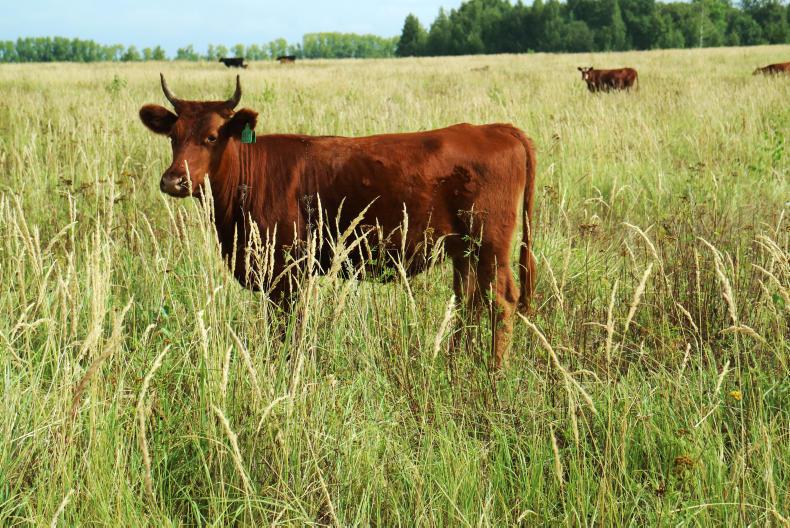

ENTER YOUR LOYALTY CODE:
The reader loyalty code gives you full access to the site from when you enter it until the following Wednesday at 9pm. Find your unique code on the back page of Irish Country Living every week.

CODE ACCEPTED

You have full access to farmersjournal.ie on this browser until 9pm next Wednesday. Thank you for buying the paper and using the code.

CODE NOT VALID
Please try again or contact us.
For assistance, call 01 4199525
or email subs@farmersjournal.ie
Sign in

Incorrect details
Please try again or reset password
If would like to speak to a member of
our team, please call us on 01-4199525
Reset
password
Please enter your email address and we
will send you a link to reset your password

If would like to speak to a member of
our team, please call us on 01-4199525
Link sent to
your email
address
![]()
We have sent an email to your address.
Please click on the link in this email to reset
your password. If you can't find it in your inbox,
please check your spam folder. If you can't
find the email, please call us on 01-4199525.
![]()
Email address
not recognised
There is no subscription associated with this email
address. To read our subscriber-only content.
please subscribe or use the reader loyalty code.
If would like to speak to a member of
our team, please call us on 01-4199525
 This is a subscriber-only article
This is a subscriber-only article
Update Success !
After travelling cross-country for two days through Western-Russia, John Haskell and I sit in a dimly lit, otherwise empty restaurant carriage on an overnight train rattling toward Moscow. I pose the question: “How does an American with a background in finance come to own and produce beef on over 9,000ha deep in rural Russia?”
John grew up in Alabama, studied economics in college and pursued a career in finance, eventually basing himself in New York.
“In 1991, my cousin went to Russia and got involved in real estate. He began to do well and I became interested in the concept,” John told me.
He went out himself in 1996 and set up an investment fund, buying and selling land and real estate.
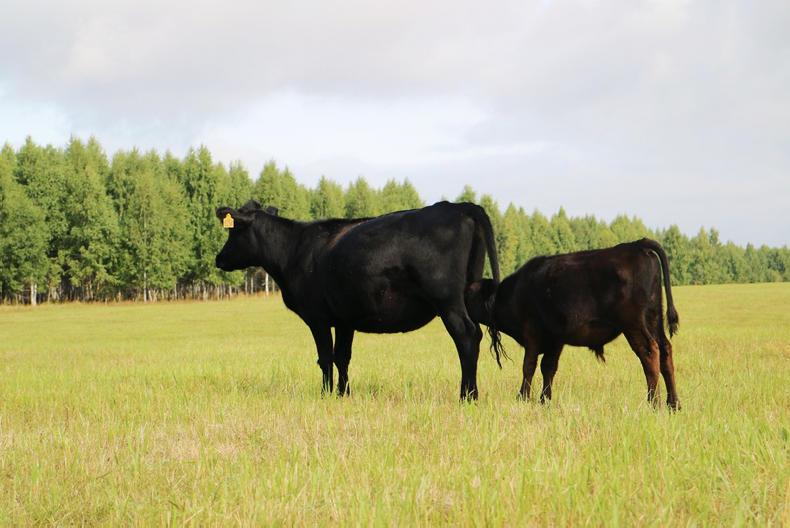
This went on for 11 years, with John basing himself between Moscow and New York. In 2006, this fund was wound up and John assembled another investment group with partners in New York. This time the focus was solely on agriculture – buying farmland cheap, sometimes growing crops for a period, and selling it on.
With the economic crash of 2008, John’s NY-based investors grew weary and wanted to install their own manager – not trusting John’s. “So, in 2009, this new manager forges my signature and steals a big chunk of money from the bank account,” John says, before uttering some colourful phrases.
The investors back home then washed their hands of the whole project, leaving John to salvage what he could from the land in Russia. At that point in time, there was a portfolio of 40,000ha on the fund’s books.
“I thought, great, if I can recover 10% of the value of this land, after liquidating what was necessary, it would be time well spent. Maybe I could even sit in my apartment in New York and watch the rental cheques roll in.”
John soon realised that while opportunities to sell off land were few and far between, the rental market for agricultural land was almost non-existent in western Russia. Such was the lack of farmers, good farmland could be bought for €200 to €300/acre and abandoned ground for as little as €25/acre.
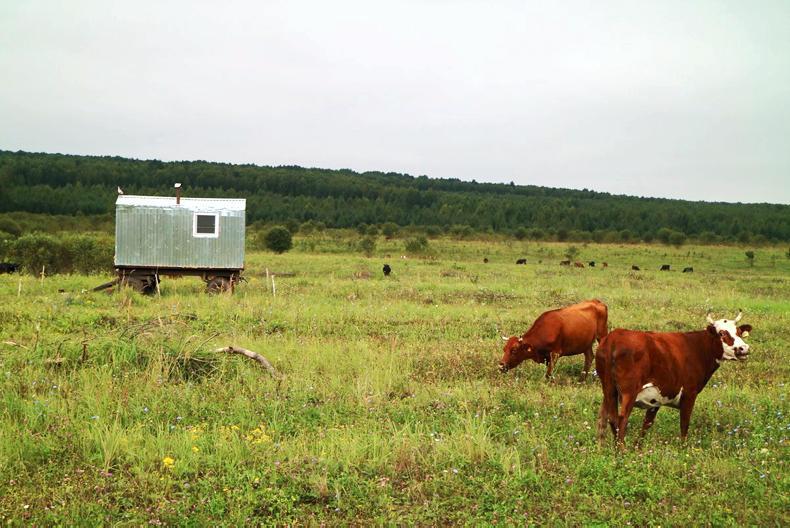
“I needed to farm this land and it soon became clear that nothing but beef was practical. There had been a really bad drought year in the region in 2010, with massive cropping losses.
“Also, I would have needed huge investment in equipment to grow corn. That would need finance and no one wants to lend against land in Russia because it’s so cheap. The subsidies available also meant that we could get into beef without any big investment.”
Extreme weather
John was confident that beef would allow him to hedge against a drought year. The climate in the area can get extreme.
“Where one of my farms is, in Tambov, your peak temperature in summer is 30°C for a couple of days – it got up to 40°C for several days in 2010. Then your typical winter low point is -35°C. Monthly rainfall is about 2in and it’s quite regular,” he told me.
John is now running three farms – two in the Tambov region and one around 300km away in Penza. Given the lack of infrastructure in rural Russia, this 300km trip takes around six hours. “At the moment, only one of my Tambov farms has stock on it. The other is overgrown and we got guys in clearing it.
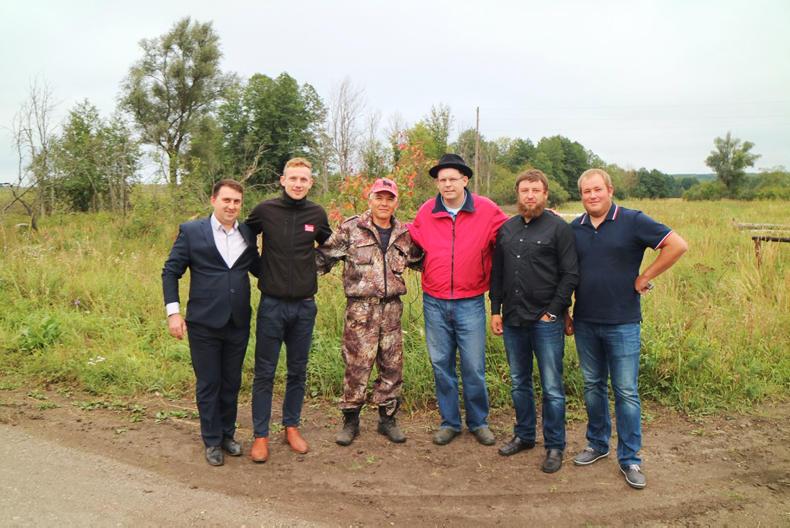
The active farm in Tambov consists of 3,200ha and is currently carrying 900 head, including 400 breeding cows. There were 5,000ha here formerly, but some had to be sold to pay off investors.
Alexander Gregoriev (62) lives in the area with his wife and is farm manager here. A farm manager’s annual salary in Tambov is €8,500.
“Gregoriev worked for us when the fund owned the land and it was in tillage. I knew he was a good guy, but he knew nothing about beef. He told me initially that the animals would freeze to death,” John said with a chuckle, “but we got him learning.”
Thousands of hay bales
There are 18 workers on the Tambov farm currently. This might seem like a lot, but John’s farms need to make thousands of hay bales every year and also have guards with the cattle groups at all times to prevent theft or would-be hunters playing target practice with the cattle.
Cows here calve in April and May and wean in November with calves sub-200kg at this point. Cattle receive alfalfa hay outdoors during the winter. One of John’s sole big investments has been machinery to make hay on both of his farms.
“Bulls have access to oats ad libitum from right after weaning through to slaughter at 18 months of age. They’ll be like 485kg at that point. We sell live to the processor for about 128RUB/kg (€1.83/kg). Cows and heifers don’t get any generally – females have got to look pretty miserable before we feed them oats.”
Over in Penza, the farm manager is an Uzbek named Ruzikul Khazanov.
“Ruzikul’s story is interesting. A Montanan friend of mine who worked as an agri-consultant was on a farm near Moscow and saw the work ethic of the Uzbeks relative to the locals. Ruzikul was in charge of them there.
“After my friend left, the farm changed hands and Ruzikul and all of his Uzbeki colleagues were let go by new management. He ended up working on a construction site in Dagestan, eastern Russia, which, let’s just say, is not a place where they would roll out the red carpet for someone like you or I.
“Anyway, I called Ruzikul up on the advice of my friend and he eventually came to run the Penza operation, overseeing 15 other Uzbeks.”
Young forest
John’s farm in Penza is a bit different. It was originally covered in young forest and bought by the fund for the equivalent of €25/acre. There are 4,700ha here and Ruzikul’s men are currently clearing away the trees.
There are 2,000ha open (available for grazing) at this point. The clearing process involves felling the young trees. Stumps are left in the ground and the trees are left on site. These will rot in a couple of years and the cattle graze the vegetation that grows around the stumps.
In terms of cattle in Penza, there are 1,100 head, of which 600 are breeding cows. Animals here are bred to AI using synchronisation protocols, after which stock bulls go in.
Calving and the production systems are similar to Tambov and the Penza farm is used to produce some breeding stock for both herds.
“Penza is coming together really nicely considering what the land was bought for. The Uzbeks’ work ethic is great and they’re really clearing that place quickly. I recently got Ruzikul to send some of those guys to my empty Tambov farm to begin clearing trees. The local government was fining us for not doing anything with the land.”
Genetics and free cows
John is keen to use genetics from the Mongolian Kalmyk cattle breed. The breed has a small mature weight of around 440kg and is extremely resilient and easy-calving. However, they are slow-growing animals. To counteract this, John crosses these Kalmyks back to an Angus. Birth weight for a Kalmyk-Angus-cross is around 22kg.
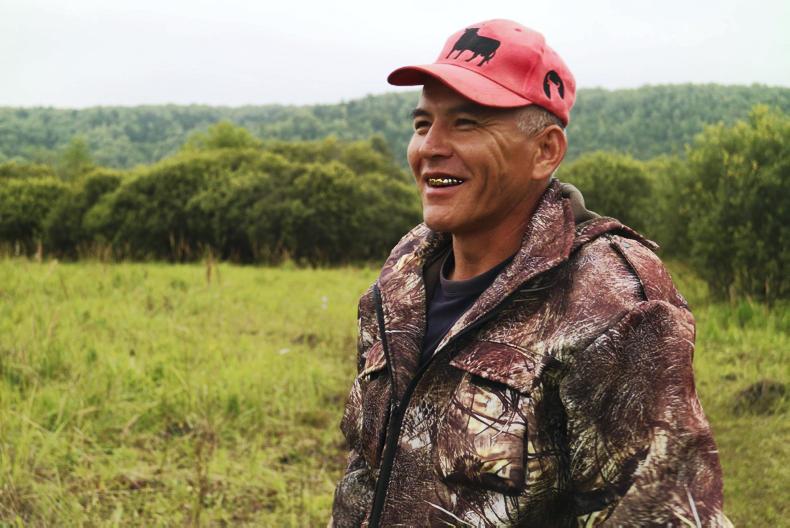
Ruzikul Khazanov.
I argued that purebred Angus cows survive perfectly well outdoors year-round right across America and Canada, where the climate is very similar, and that John could improve his performance by selecting more Angus. But he told me how he counted only three calving losses that could be attributed to the fact that a human was not present across 1,000 cows as his reason for the Kalmyk influence.
“We don’t assist with calving – the Kalmyks won’t let you near them to anyway. They have nasty-ass horns too.”
Another huge reason for purchasing Kalmyks is that they cost less per kilo, so in a system where subsidies are paid per kilo, like the Russian one, a Kalmyk heifer can be almost free.
Subsidies
Russia is divided into 46 Oblasts and each one has a budget for agricultural support. Many of these are subsidy-based and purchase subsidies on cattle brought into the Oblasts where John operates were a big incentive for John to go into beef production.
“They vary year on year and in some years there are none available. In 2013, I bought 80 Kalmyk cows at a dispersal sale. I paid 100RUB/kg (€1.43/kg) and the government gave me back 65RUB/kg €0.93/kg).
“Later that year, I bought more Kalmyk heifers. This time I paid 70RUB/kg (€1/kg) and got 65RUB/kg (€0.93/kg) back from the government. They had to be shipped 1,000km to my farm so the net price ended up being around 80RUB/kg (€1.14/kg) before subsidy, but I wasn’t complaining – I was getting animals for like $40 each. In 2014, there were no subsidies available, so we took in no females.”
John told me how the Oblasts compete furiously with each other to have the biggest cattle inventories and best grain yields every year, which somewhat helped me to get my head around an eyebrow-raising transaction made in 2015.
“Guys always laugh about this one. So, in early 2015 we got 80 neglected Kalmyks at a dispersal sale south of Moscow. They were like 80kg, half what they should’ve weighed. They cost the equivalent of $120 per head (8,800RUB).
“I brought them to Tambov, where there were no purchase subsidies in that year. They thrived really well and weighed 200kg at the end of the season. That year, Penza was giving out a subsidy of 80RUB/kg, so I got Gregoriev to sell them to Ruzikul in Penza for 100RUB/kg (€1.43/kg) and he got 80RUB/kg (€1.14/kg) back – they were bought originally for 8,800RUB each (€125) and in the same year we got a subsidy of 16,000RUB per head (€228) on all of the 80 animals, just for moving them between my farms. It meant we had taken in 80 new animals and made almost €8,300.
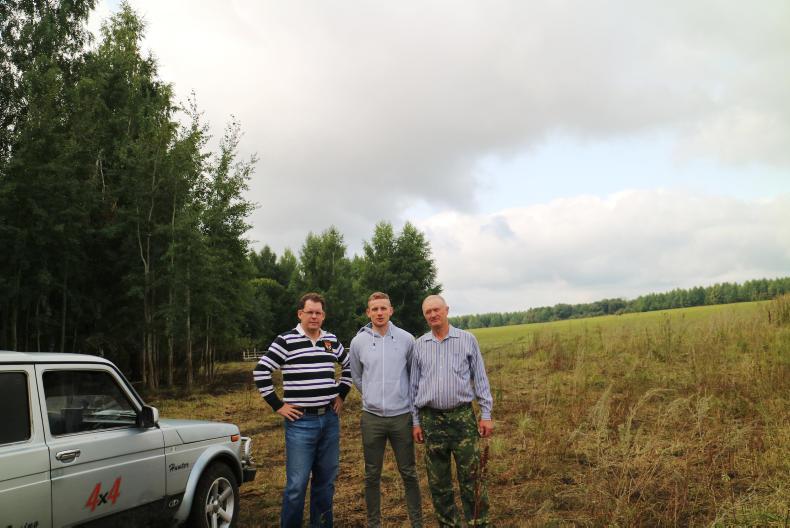
John Haskell (left) and Alexander Gregoriev (right).
“I know it makes no sense, but I suppose these government guys have a budget that they need to use up and there aren’t a lot of beef farmers in these areas. My son jokes with me when I tell him about these $20 dollar cows I can buy – ‘Dad can I buy some of these cows too?’
“There are some terms you have to adhere to like quarantining the cattle. You’re also supposed to keep the animals on your farm for a minimum of three years – nothing too major. They give out subsidies on equipment too – I got 42% back on haymaking equipment that Ruzikul bought last year.”
The Russian beef industry in numbers
Silage budgeting on BETTER beef farms
SHARING OPTIONS: